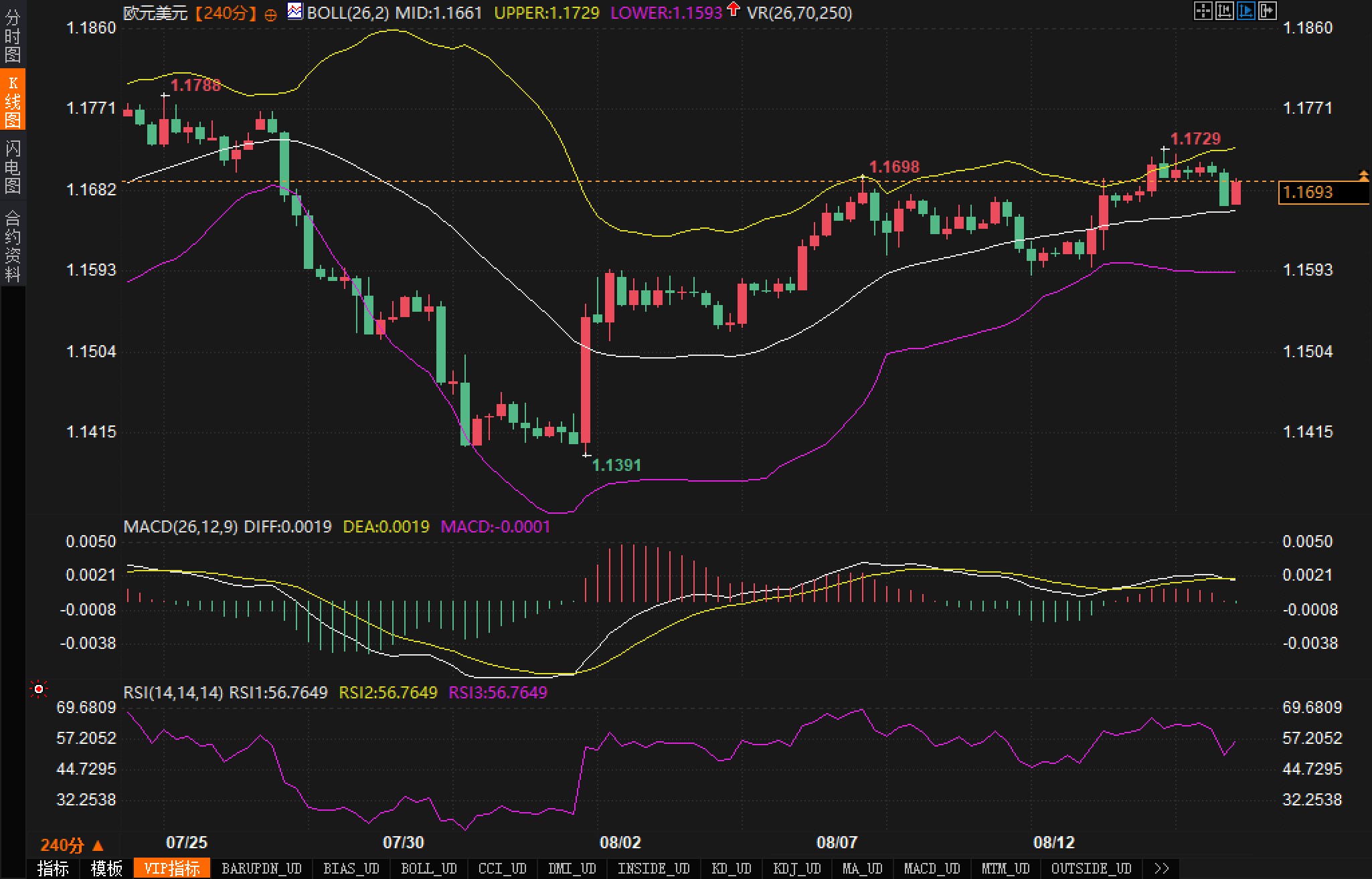Euro trend in doubt: Fed rate cut expectations and Eurozone economic slowdown intertwined
2025-08-14 19:40:22

According to the latest Eurozone GDP data for the second quarter, the Eurozone's economic growth rate was 0.1%, with a year-on-year growth rate of 1.4%, a decline from 0.6% and 1.5% in the first quarter. Although Eurozone employment data was better than expected, industrial production fell significantly below expectations, with a 1.3% decline, which had a negative impact on market sentiment.
In the United States, comments from U.S. Treasury Secretary Scott Bessent fueled market expectations of a Federal Reserve rate cut, putting pressure on the dollar. In an interview with Bloomberg, Bessent said the Fed could implement a 50 basis point rate cut in the coming months, further fueling market expectations of an easing policy from the Fed.
Today, the market will focus on the US Producer Price Index (PPI) and weekly unemployment claims data, which traders hope will indicate whether the Federal Reserve will cut interest rates at its September meeting. A weak PPI figure, especially if inflation falls short of expectations, could further bolster market expectations of a Fed rate cut.
Technical aspects
As can be seen from the chart, the EUR/USD Bollinger Bands indicate a relatively narrow range of price fluctuations, with the upper and lower Bollinger Bands (1.1729 and 1.1593) forming a short-term support and resistance range. The current price is close to the middle Bollinger Band (1.1661), indicating that the exchange rate is consolidating within the 1.1593 to 1.1729 range.

Support level:
1.1593: The lower track of the Bollinger band. If the exchange rate breaks below this level, it may fall further to the support area around 1.15.
1.14: Strong support level. If the exchange rate falls below this level, it will enter a deeper retracement range.
Resistance Level:
1.1729: The upper track of the Bollinger band. If the exchange rate breaks through this level, it will likely challenge the high of 1.1778.
1.1788: The previous high point. If this position is broken, the rise may accelerate further.
From a technical perspective, the MACD is slightly negative (-0.0001), indicating weak market momentum in the short term. In addition, the contraction of the Bollinger Bands also suggests that the market may be in a consolidation phase before a breakout.
Market sentiment observation:
Currently, market sentiment is bullish, especially against the backdrop of rising risk sentiment triggered by US Treasury Secretary Bessent's remarks on the Fed's interest rate cut. Traders generally have high expectations for the Fed's rate cut. The weakening US dollar has driven traders' demand for risky assets, further supporting the euro's rise.
However, slowing economic growth and weak industrial production in the Eurozone have weighed on the euro, leading euro bulls to be more cautious in their offensive moves at this stage. Traders are focused on upcoming US data, particularly PPI and unemployment claims, which will directly impact market expectations of the Fed's policy direction.
Market Outlook
Bullish Outlook:
If EUR/USD breaks through the upper Bollinger Band at 1.1729 and holds above it, further gains are expected. Market attention will shift to the Federal Reserve meeting. If the Fed sends a dovish signal, it could further boost the euro's upward momentum. In the short term, the euro is expected to re-test the key resistance levels of 1.1788 and 1.1800.
Bearish Outlook:
If EUR/USD fails to break through the upper Bollinger Band at 1.1729 and market sentiment returns to caution, the exchange rate could retest support at around 1.1593. If the Federal Reserve doesn't cut interest rates as expected, the US dollar could rebound, further suppressing the euro. At this point, bears may once again take control, targeting support at 1.14 and below.
- Risk Warning and Disclaimer
- The market involves risk, and trading may not be suitable for all investors. This article is for reference only and does not constitute personal investment advice, nor does it take into account certain users’ specific investment objectives, financial situation, or other needs. Any investment decisions made based on this information are at your own risk.





















